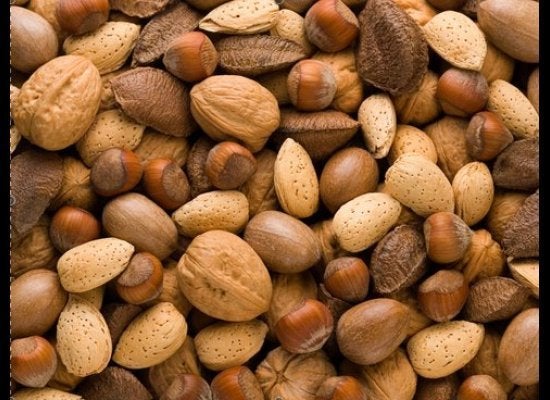
For some super-motivated people, counting calories, calculating macronutrient proportions or weighing food can help in their quest to lose weight. But for everyone else, it can be hard to keep juggling the cups and weighing scales and calculators for too long. If you fall into the latter category, researchers say that there’s only one thing to keep in mind: Eat more fiber.
When compared to the American Heart Association’s dietary recommendations, which include several common-sense pieces of advice like “Choose and prepare foods with little or no salt” and "Cut back on beverages and foods with added sugars,” the simple advice to eat 30 grams of fiber a day resulted in almost as much weight loss as the AHA’s guidelines over the course of the year. The study was published online Tuesday in the Annals of Internal Medicine.
The finding could be a boon for people who need to lose weight for medical reasons but feel too overwhelmed to completely overhaul their lifestyle all at once, explained lead researcher Dr. Yunsheng Ma, M.D., Ph.D. in the study. Foods that are high in fiber (meaning indigestible dietary fiber found in plant-based foods) help make you feel full for longer. Ma also proposed that high-fiber diets increase the need to chew, which in turn reduces hunger. Encouraging people to eat more fiber is also a shorthand way to point to foods that are healthiest for us, wrote Ma.
"Our simple message of increasing fiber includes not only fruits and vegetables, but also whole grain foods, legumes, and nuts,” wrote Ma in an email to HuffPost Healthy Living, adding that these foods also tend to be less expensive than low-fiber foods, like meat and dairy.
A medium-sized apple has about 4.4 grams of fiber and one cup of dark leafy greens like swiss chard also has about four grams. The Institute of Medicine recommends that women eat about 25 grams of fiber per day, while men should eat 38, but Americans only eat an average of 15 grams per day, according to the Mayo Clinic.
For the year-long study, Ma recruited 240 overweight people who had at least one symptom of metabolic syndrome, like high cholesterol, high blood pressure or high blood sugar. The participants were then randomly assigned to follow either the high-fiber diet or the AHA guidelines, which Ma defined as "restrictive" because it mostly focuses on what people should limit in order to lose weight. For instance, the AHA guidelines include cutting down on calories, salt, sugar and saturated fat, among other recommendations.
The fiber diet, on the other hand, focused on a single addition to the diet: a goal of 30 grams of fiber, which can be found in a range of foods.
After 12 months, those who had followed the AHA guidelines had lost an average of about six pounds, while those on the high-fiber diet lost an average of 4.6 pounds.
Despite the fact that the AHA group lost more weight, Ma argued that his results support the notion that a simple and more “permissive” kind of diet, which emphasizes what foods you can eat, as opposed to a complicated diet that frames its rules in terms of what's restricted (like the AHA guidelines), could be easier to follow and still produce decent results.
Both groups also managed to decreased their blood pressure levels and their insulin resistance. However, Ma noted that two participants developed diabetes during the course of the experiment, one in the AHA group and one in the high-fiber group, which isn’t surprising considering Ma’s recruitment criteria describe a high-risk population: overweight adults with metabolic syndrome who did not have diabetes.
Obesity affects more than one-third of American adults and is linked to about one in five deaths in the U.S. In addition to socioeconomic factors that prevent access to healthy foods, there is also some indication that people find healthy eating too difficult, or they have a skewed vision of what “healthy” means.
A nationally representative survey commissioned by the International Food Information Council Foundation in 2012 found that more people believed it was easier to do their taxes than it was to figure out how to eat healthier. The same survey also found that 76 percent agree that “ever-changing nutritional guidance make it hard to know what to believe.”
"The exact amount of information to deliver in a dietary intervention remains an elusive question,” wrote Ma at the end of his study. "The challenge is to identify the ideal amount of information to change behavior without overwhelming the participant." Maybe fiber is a good first step.
